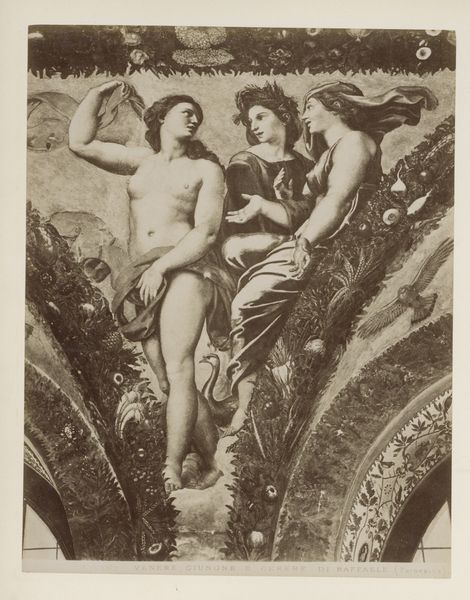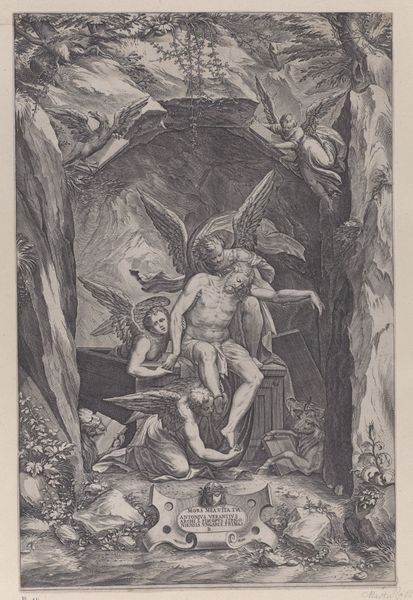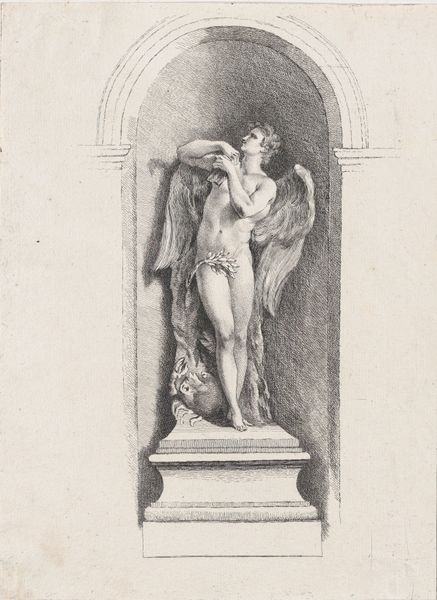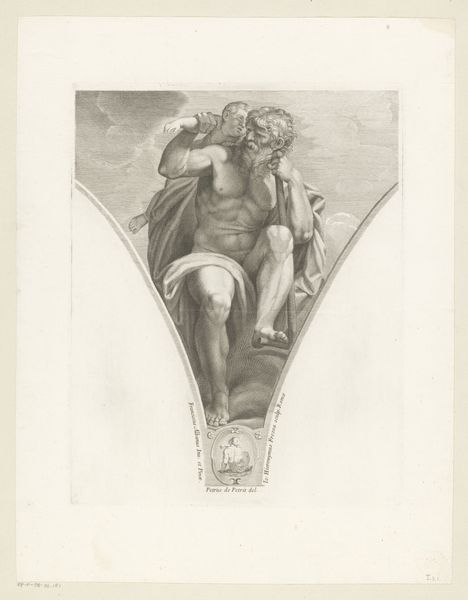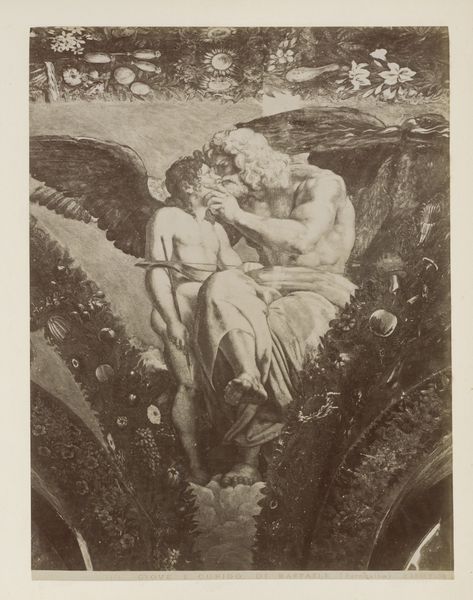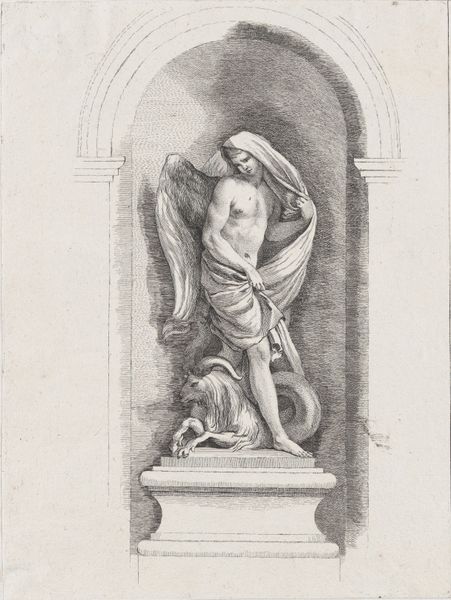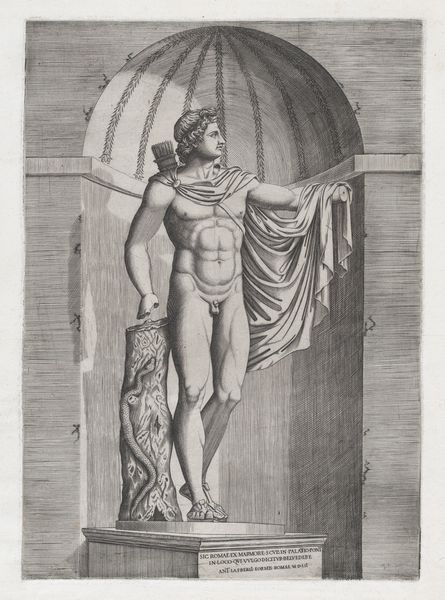
Fotoreproductie van fresco Venus en Jupiter door Rafaël in het Farnesina te Rome c. 1870 - 1890
0:00
0:00
print, photography
#
portrait
#
allegory
# print
#
caricature
#
classical-realism
#
11_renaissance
#
photography
#
portrait reference
#
surrealism
#
portrait drawing
#
history-painting
#
italian-renaissance
Dimensions: height 259 mm, width 202 mm
Copyright: Rijks Museum: Open Domain
Curator: Isn't it curious how an artwork can whisper stories across centuries? This photographic reproduction, dating back to the late 19th century, captures Raphael's fresco "Venus and Jupiter" from the Farnesina in Rome. What's your initial take on this particular rendering? Editor: Stark! It feels so divorced from the vibrant life of a fresco. This photographic translation transforms Raphael’s airy embrace of gods into a study in contrasts, emphasizing the textures but flattening the depth. Curator: Indeed. I find it fascinating how the photographic process here shifts our focus. What Raphael painted to evoke airy grace, Domenico Anderson, the photographer, re-presents as a document of a previous artwork. It raises the question: does photography preserve or transform? I wonder how the artisans, who likely meticulously copied Raphael’s vision, felt about their craft being further reproduced through mechanical means? Editor: That’s a brilliant provocation! We tend to valorize "original" artistic creation, obscuring the labor involved in its reproduction. It puts into question what even *is* art? Was it in the touch of Raphael’s brush? Or in the reproducible images for popular consumption? Was its value social, economic, devotional, all of these at once? Curator: Exactly! And look at the composition itself. Raphael placed Venus and Jupiter nestled within an allegorical arbor, and we view it, now, flattened, through Anderson's lens. Editor: Right, you lose the illusion, or any trace of artifice. And you’re confronted with the social fact of its making! I’m captivated by how this reproduction implicates artistic production—all that labor involved. Curator: It makes you reconsider, doesn’t it? So, as we turn from this work, are we left considering photography's deceptive nature? Editor: Or its illuminating one, showing us what’s really *behind* even the loftiest-seeming creations.
Comments
No comments
Be the first to comment and join the conversation on the ultimate creative platform.




